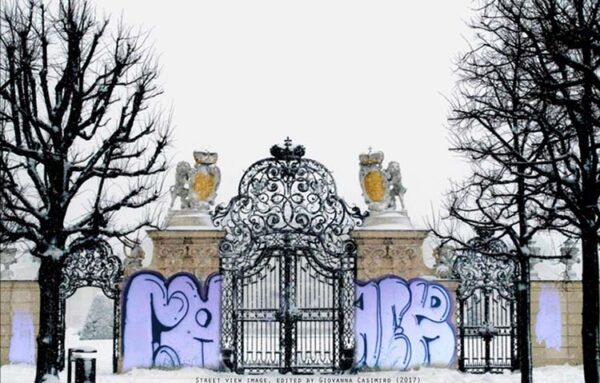Augmented Reality And Street Art: Social And Cultural Engagement In The City
https://artivive.com/augmented-reality-and-street-art/
Augmented Reality And Street Art: Social And Cultural Engagement In The City
The appropriation of urban spaces by artists is nothing new, and street art expresses local cultures, politics, and society, turning art into an engagement tool. As a part of urban typography, graffiti and murals display identity. The use of augmented reality as a tool for street artists is becoming more popular in recent years, creating animated murals around the world. The future of augmented street art in the urban landscape is unlimited.
The city itself is composed of overlapping layers of visual information, authored by various social groups. What makes street art so dynamic is its ephemerality. It can be erased at any time; it lives in the moment. Augmented reality can be a tool for the creation, relocation, subversion, and preservation of artworks spread across the cityscape. The city of Vienna recently showed an interesting street art intervention using augmented reality, created by new media artist Litto, at the ARCC.art Open Space. This work used Artivive, an augmented reality tool for art and artists. This year, artist and illustrator Angela Ho created an augmented reality mural for the HKwalls 2018 street art festival in Hong Kong.
ARLines of the City (2018) is an artwork I designed as a digital relocation of Brazilian graffiti in other cities around the world using augmented reality. The main concept came from the erasing of murals across São Paulo. In 2017, the city hall decided to “clean the city” walls. In order to restore and relocate lost graffiti, I mapped some of the local street art and reinstalled them in Vienna, Boston, and Chicago using augmented reality. During 2017, I worked in partnership with Bostonian street artist Cedric Vise Douglas, creating several augmented murals in Boston, Lynnz, and Virginia. In the same vein, MIT students created The Borderline Mural Project, proposing a fully animated experience of augmented murals around the MIT Campus, an immersive tour.

ARLines of The City – Vienna, Boston, and Chicago
As a result of interventions and the partnership between the artists (ARLines—Giovanna Casimiro and The Borderline—Julia Rue), created an open call festival, “FestAR—live murals festival”, for augmented murals in the city. This project is going to happen in Boston and Rio de Janeiro in 2018, using Artivive. The festival is focused on the citizens, to get locals involved with the art, making the city a more playful, colorful place. The idea of animating murals with Artivive in the city also resulted in a five-day workshop in São Paulo. “Urban Noises” acted as a cultural and artistic exchange between American and Brazilian artists, bringing different techniques together to create two augmented reality murals during May 2018. Organized in partnership with the São Paulo Innovation Department, the Porto FabLab, and the FabLab Livre SP, the workshop allowed local street artists to learn about augmented reality and how to use Artivive for their projects. Coordinated by myself, Andre Deak, and the Efemmera Association, the invited American artists connected with MIT and were able to learn analog techniques of painting and spraying while they taught locals about augmented murals. This resulted in two massive murals collaboratively created by five different local graffiti artists. These works were made available at different locations around São Paulo downtown. At Vila Itororó and the Porto FabLab visitors were able to interact using augmented reality.
More and more street artists are learning methods and techniques to empower their work using augmented reality as a tool for urban immersive experiences, where sound, image, video, and even other languages can be explored. The ability to merge the analog with the digital makes the augmented murals so interesting. Layers complete one another, bringing life to parts of a city that are otherwise invisible. The idea of what art is legal and what is illegal could also be discussed. Augmented graffiti can be partially or completely contained into digital space, potentially without any physical presence, (digital graffiti can’t be erased as easily as regular graffiti, as shown in the ARLines project).
In this respect, we can think of the use of augmented reality as an artistic tool for creation and resistance in the city. Augmenting murals is not only a way to make a city more playful but also a way to make shared space democratic, adding to the collective creation process and artistic collaboration, crossing cultures, and merging ideas.
Comments
Post a Comment